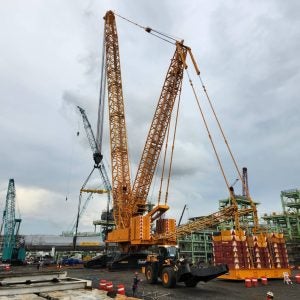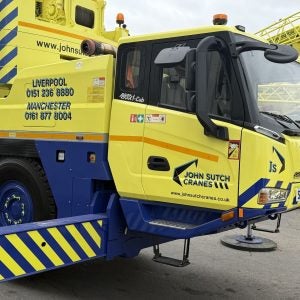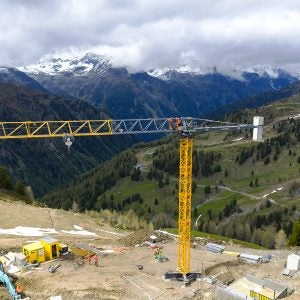Sarens is still 100% a family-owned business. During the 1990’s we changed from more than 30 stakeholders to the current five. It was an important issue because it allowed us to grow commercially and avoid postponing decisions as only five people were needed to make them.
The board of directors consists of five family members. There’s Ludo Sarens, the director of the board, Hendrik Sarens, who leads the crane department as well as sales, and Benny Sarens, our technical director and head of research and development. Marc Sarens is responsible for the fleet and Jan Sarens runs the Mexican business. The sixth board member is a financial consultant.
Together with our CEO Wim Sarens, those six make the decisions and determine strategy. Outside of the board Steven Sarens is one of the sales managers, specialising in special projects for anything that is non-crane related, and Carl Sarens is our operations director for technical solutions projects worldwide.
We have a presence in more than 43 countries now and we are one of the top heavy-lift and special transport companies worldwide.
2006 was an important time for Sarens because of the order we received for the Goro Nickel mine project in New Caledonia for EPC contractor Foster Wheeler.
It was a major breakthrough for Sarens on the big project market, from a technical point of view, because it involved a lot of organizational development. It was the first time we had to mobilize that quantity of equipment and personnel so far away from our headquarters.
At the peak we had more than 120 cranes on that site and more than 75 people working six days a week. It involved input from Sarens Asia plus people and cranes from our branches worldwide.
It fixed our presence in that region where there is a lot of potential in mining coming up.
When the global financial crisis struck it also brought the opportunity to widen our vision towards the world, and establish branches in emerging markets like the Far East.
We are working through an agent in China and have opened an office in Japan. Latin America is developing very strongly, so we established Sarens Columbia, and we are also increasing our presence in Mexico.
We acquired Rigging International in May 2009 to have a stronghold in the US, and from there we are looking at Canada, where we also purchased Canada Crane Services a few months ago.
Even so, the largest quantity of our cranes is based in Europe: in France, Germany, the Netherlands, the UK and Poland. The second largest would be Asia, mainly Thailand, and the Middle East, however Australia is also important.
Sectors in which Sarens is particularly active include oil and gas, mining, and energy, including more and more nuclear power sector work, which is becoming a very strong area for us.
In Belgium we have more than ten years of framework agreements to work on nuclear power plants, where we supply hydraulic cranes and trailers for maintenance services.
In total we have 795 truck cranes and all-terrain cranes, 141 rough terrain cranes and 366 crawler cranes. That is in addition to top-slewing tower cranes, truck-mounted tower cranes, twin barges, tugboats and a standard North Sea barge.
And that’s not even including out latest development, the 3,200t SGC120 ringer-style crane.
However we have a lot more to offer than just cranes. We are a project driven company. We also supply special transports.
We operate 1,100 axle lines of SPMTs worldwide, one of the biggest fleets in the world. We undertake inland transport activities as well as loadouts and ro-ro operations.
We also have tower systems developed in house, including the Sartower system and the Sarens Multi Lift Tower (SMLT). We have 8 Sartowers, each with a lifting capacity of 1,000t.






